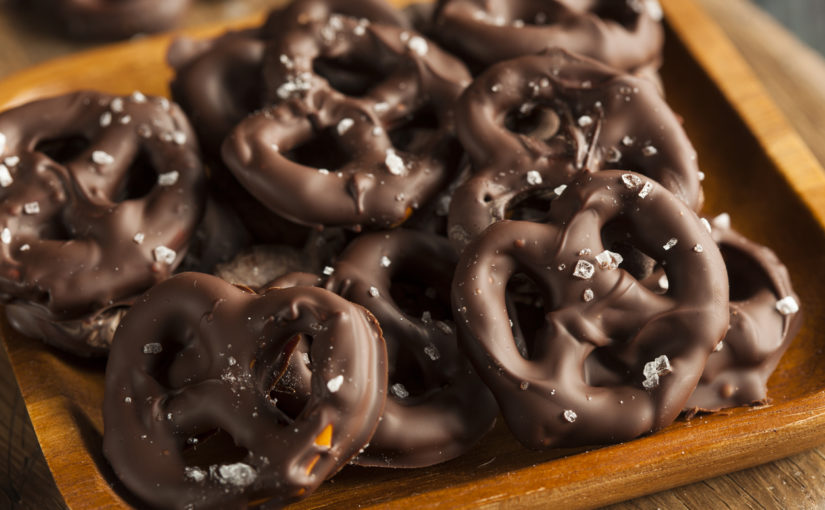Somewhere along the lines, people figured out that salty and sweet foods can be great together.
Maybe it was whoever came up with milk chocolate covered pretzels, or the creator of salted caramel, or even the first person to dip a French fry into their milkshake.
That’s to say nothing of classics like peanut butter cups or more adventurous concoctions such as chocolate covered bacon.
We know these pairings taste good, but why? Read on to learn the science behind the heavenly marriage of salt and sweet.
Layers of flavor
Here’s a refresher course from 8th grade biology: the human tongue has five different sections for detecting different flavors: sweet, salty, sour, savory and bitter, although the tongue has the ability to taste all five flavors at once.
But the presence of salt enhances sweetness.
If you’ve ever made cookies, you know that recipes tend to call for a pinch of salt. There’s a good reason for this: salt strengthens our body’s ability to appreciate the sweetness in sugar.
The sodium in salt alerts glucose sensors in our tongue and intestine that we’re eating something sweet, making our taste buds more receptive to the flavors.
Food developer and author Barb Stuckey – speaking to Gizmodo – describes it this way:
“We like sweet because it signals calories, or energy, to us. And we like salt because we need it for normal bodily function. We have no sodium storage system, as we do with other minerals (i.e. we store calcium in our bones), so Mother Nature’s solution is a built-in craving for it. The combination of these two positive biological responses is VERY pleasurable. To use an analogy, it’s akin to hearing beautiful music while sniffing rose petals: two positive sensory stimuli.”
Salt gives chocolate added texture
As anyone who’s enjoyed a milk or dark chocolate covered pretzel can tell you, salt can give a chocolate creation added texture, offering a little bit of crunch to the comparatively soft make-up of your confection.
It can also help contrast the sweetness in chocolate and help bring it under control in recipes where ingredients like caramel, dried fruit or vanilla are present.
The magic of sensory specific satiety
Sweet and salt go well together due to a concept known as “sensory specific satiety.”
People like a variety of tastes and foods. We get tired of experiencing the same tastes again and again. If you eat nothing but salty foods – or nothing but sweet – you’ll lose your taste for them. This is sensory specific satiety.
But when we layer flavors together, you avoid overwhelming your mouth with a specific taste. Sweet and salt taste even better and leaves you wanting more.
Too much of a good thing
Salt and sweetness go well together…in moderation. Too much of it can become unpleasant. From the same Gizmodo piece:
“The explanation for this may lie in how salt interacts with the tongue’s other taste receptors. A recent study in Nature found that high-salt levels activate not only salt taste receptors, but also both bitter and sour taste receptors. So that “yuck” reaction to a cookie that’s too salty may be a reaction to the sudden sense of bitterness and sour in your mouth, too.”
Salted caramels and chocolate bark. Dark and milk chocolate covered pretzels. Fans of the marriage of salt and sweet will find plenty to satisfy their cravings with Skip’s Candies. Visit our store today to find your favorite salt-sweet pairing.


